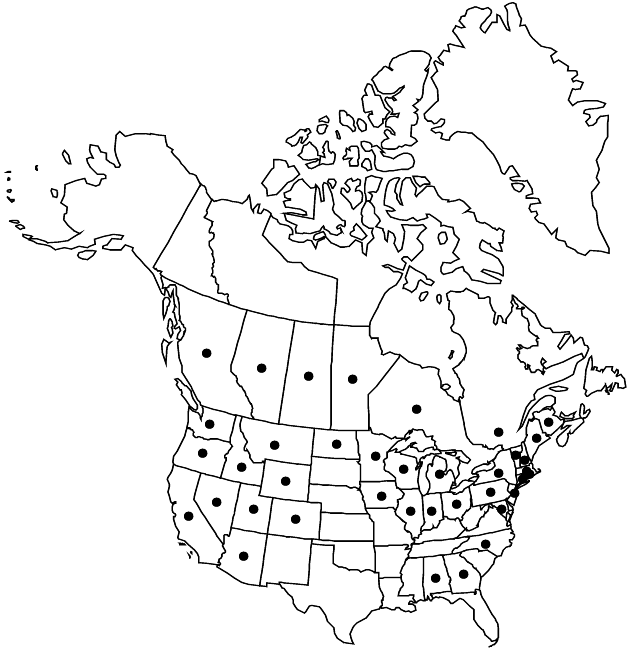Arctium lappa
Sp. Pl. 2: 816. 1753.
Plants to 100–300 cm. Basal leaves: petioles solid, 15–36 cm, glabrous or thinly cobwebby; blades 25–80 × 20–70 cm, coarsely dentate to subentire, abaxially thinly gray-tomentose, adaxially green, sparsely short-hairy to nearly glabrous. Heads usually in corymbiform clusters, long-pedunculate. Peduncles 2.5–6 cm. Involucres 25–45 mm diam. Phyllaries linear to linear-lanceolate, glabrous to loosely cobwebby, inner usually stramineous (sometimes purplish), margins with minute spreading or reflexed hairs. Florets 40+; corollas purple (occasionally white), 9–14 mm, glabrous. Cypselae light brown, often with darker spots, 6–7.5 mm; pappus bristles 2–5 mm. 2n = 32 (Japan), 34 (China), 36 (Japan); (Sweden).
Phenology: Flowering summer–early fall (Jul–Oct).
Habitat: Waste places, roadsides, fields, forest clearings
Elevation: 0–2200 m
Distribution

Alta., B.C., Man., N.B., Ont., Que., Sask., Ala., Ariz., Calif., Colo., Conn., Ill., Maine, Mass., Mich., Minn., Nev., N.H., N.Y., N.Dak., Pa., R.I., Utah, Vt., Wash., Wis., Eurasia.
Discussion
BONAP lists Georgia, Idaho, Indiana, Iowa, Maryland, Montana, New Jersey, North Carolina, Ohio, Oregon, and Wyoming; I have not seen specimens.
Roots and young leaves of Arctium lappa are edible and can be used in a variety of food preparations. Extracts of Arctium species purportedly have health benefits and are sold as food supplements. This species is sometimes cultivated as a minor crop.
Selected References
None.